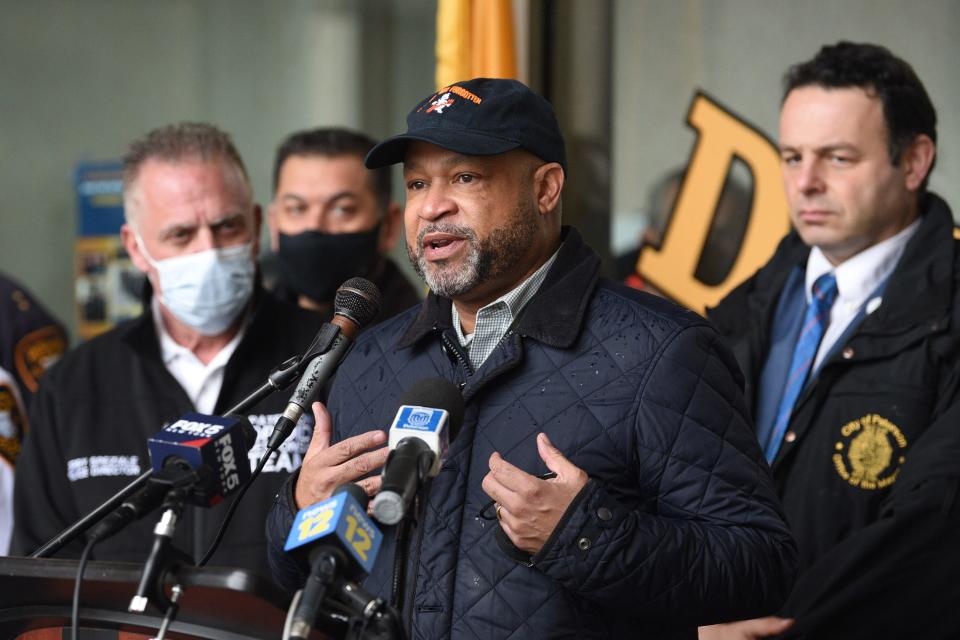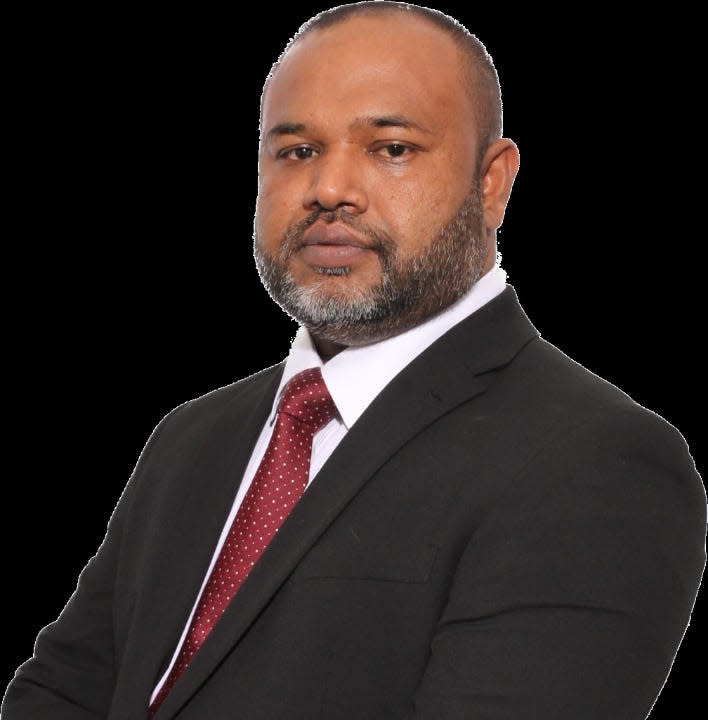Barely 15% of Paterson voters turned out for council elections. Some call that dangerous
PATERSON — Barely 15% of Paterson's registered voters cast ballots in this month’s City Council elections, the lowest turnout in the municipal contests since 2008.
Unofficial results issued Tuesday night by the Passaic County Clerk’s Office said 12,929 people voted in Paterson’s six ward council races, down from 13,556 in the 2020 ward elections, and 14,701 in 2016. Paterson has 84,856 registered voters.
Voter numbers also have been dwindling in Paterson’s mayoral election years, with the turnout dropping in those contests from 31% in 2014 to 19.6% in 2022.
Story continues after photo gallery
“Clearly, there’s extreme voter apathy,” said the Rev. Kenneth Clayton, president of the Paterson chapter of the NAACP. “We have to find a way to address that."
Those reductions in voter turnout have come as Paterson’s population has grown by more than 10,000 during the past decade.
“People feel disengaged, they’re losing faith,” said Miguel Diaz, who last December formed a new political group with the goal to increase the city’s Latino community’s role in local government.
Story continues after chart
Activist Corey Teague said he encountered unprecedented apathy while knocking on voters’ doors this spring, campaigning for candidates in Paterson’s 1st, 2nd and 5th wards.
“The general consensus was that people felt things weren’t going to get better no matter who won,” said Teague, noting that he met one woman who told him she put up a candidate’s sign on her house because the campaign gave her $50 to do so.
All six incumbents ended up winning reelection, although four did so with fewer votes than what they received in 2020. Until this year, Paterson had a streak of four consecutive ward elections in which at least one incumbent had been defeated.
Paterson could pay a price for low turnout
Paterson could end up paying a price for its low voter turnouts, said Micah Rasmussen, director of the Rebovich Institute for New Jersey Politics at Rider University. He noted that Paterson’s tallies for Phil Murphy in 2021 were one of the factors behind the governor’s lower-than-expected victory margin that year.
“The risk is that if the voter turnout decreases you become less a part of the political power picture,” he said. “Politicians may take you for granted.”
Rasmussen said Passaic County may be heading in a direction where its suburban voting blocks are becoming stronger while its urban electorate is getting weaker. He said the county’s political dynamic could change if that trend continues.
Assemblyman Benjie Wimberly, a Democrat from Paterson, said there’s no doubt that the city’s lower voting turnout diminishes its ability to get financial support from the state and federal governments.
“You have to turn out to have impact,” Wimberly said.
Voter apathy widespread beyond Paterson
Nationally, voter turnout in the last three elections has ranged from 46% to 66%, according to the Pew Research Center. Statewide, New Jersey had 27% voter turnout in 2023, 41% in 2022, and 40% in 2021, according to the Division of Elections.
Wimberly and Rasmussen noted that Paterson is not alone in terms of voter apathy. Other cities in New Jersey and around the country are having similar problems, they said. One exception has been cities in the northern part of Hudson County, where Brian Stack is state senator and mayor of Union City, they said.

“He approaches every game like it’s the Super Bowl,” Wimberly, a retired football coach, said of Stack’s political style.
Rasmussen said Camden has avoided the low turnout trend of other cities because Democratic Party leaders there have emphasized the use of mail-in ballots, almost making their use a culturally common practice.
2nd Ward tallies rise with vote-by-mail campaign
Rasmussen’s description of Camden County has an echo in Paterson’s 2nd Ward. In 2008, 1,804 people voted in the city’s 2nd Ward race. But that number has grown steadily, largely due to the use of vote-by-mail campaigns by candidates from that area’s Bangladeshi community.
In each of the last three ward election cycles, the 2nd Ward has posted the largest vote tallies, including 4,254 in 2024. The number of votes in the 2nd Ward this year surpassed the combined totals for the 4th, 5th, and 6th wards by 16%.

Aheya Khan, who finished second in the 2nd Ward election with 1,714 votes, got more support than every candidate — winners and losers — in the five other wards. In fact, the 2nd Ward’s third place finisher, Frank Filipppelli, got more votes, 488, than did the winner in the 4th Ward, Ruby Cotton, who finished with 467.
Aslon Goow, who served three terms as Paterson’s 2nd Ward councilman before he was defeated in 2012 in one of the first city elections largely decided by mail-in ballots, called local voting trends “disturbing.”
“Clearly, there should be a change of leadership in the city,” said Goow, who made an unsuccessful bid for mayor in 2022. “We have a dysfunctional government at the administrative level and at the legislative level. The city is not clean and it’s not safe. But with voter apathy, people aren’t making any changes.”
Move elections to the fall
Councilman Al Abdelaziz, who coasted to victory in the 6th Ward council race, said Paterson should consider making changes in its local election schedule. At present, Paterson is one of fewer than 40 cities in the state that hold municipal elections in May instead of November.
Abdelaziz said Paterson should follow the lead of other places, including Jersey City, that switched their elections from the spring to the fall.
“It’s obvious, people vote more in November,” said Abdelaziz, co-chairman of the city’s Democratic organization.
Paterson is unique in another way. It’s the only city with May elections that doesn’t put all its local government seats up for grabs in the same contest. Instead, Paterson holds its six ward council races one year and then has its mayoral and three-at-large council seat elections two years after that.
As a result, without the mayor’s contest at the top of the ballot, Paterson’s ward elections tend to draw far fewer voters. Abdelaziz said the city should consider having the elections for mayor and all nine council seats at the same time. That move, he said, would help increase voter turnout.
This article originally appeared on NorthJersey.com: Paterson NJ election turnout was near 15%

